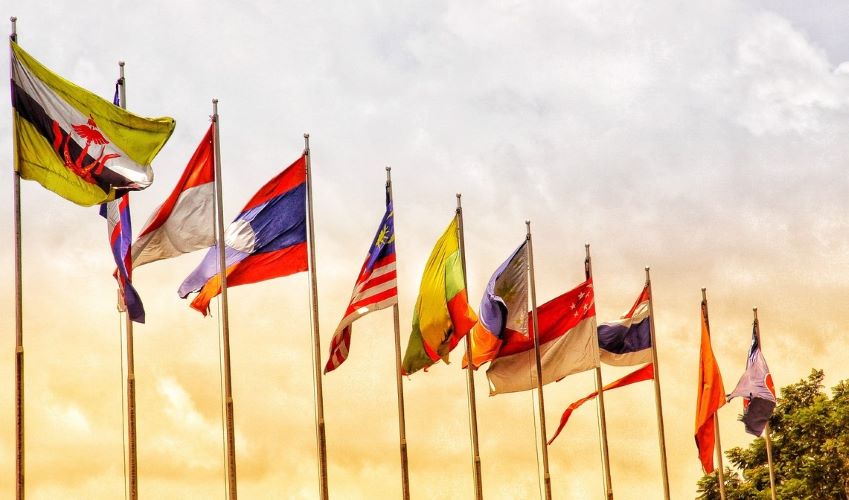AT A time of increasing trade turbulence, economic diversification has become a dominant theme. Against this backdrop, the Asean-Middle East corridor is gaining in prominence as the two regions enjoy economic and connectivity potential, solid growth prospects and favourable demographics.
Although the links between the 10-member Asean bloc and the Middle East are not as extensive as those with other regions, there are reasons to believe that there is a great deal of untapped potential.
Take trade, for example. At present, bilateral trade, which totalled more than US$126 billion in 2023, is uneven. Aside from certain products, Asean’s exports to the Middle East remain rather limited. While Asean’s exports to the Middle East and North Africa (Mena) – defined as the Gulf Cooperation Council (GCC) countries plus Egypt – has grown over the years, the absolute level of exports is only a third of that of total imports from Mena.
On the flip side, 6 per cent of Asean’s imports come from the Middle East, on average. They are heavily concentrated in the energy sector. While non-fuel imports have risen steadily over the years, fuel imports dominate with a share close to 80 per cent.
It is worth stressing the role of Singapore as one of the world’s top three oil trading and refining hubs, despite having no hydrocarbon resources. Around half of Singapore’s crude oil imports come from the Middle East, particularly from the United Arab Emirates (26 per cent) and Qatar (13 per cent).
According to the US Energy Information Administration, Singapore has a refining capacity of 1.3 million barrels per day, before exporting its refined petrochemical products to its Asian neighbours. Asean peers, along with China, consume the lion’s share of Singapore’s petrochemicals exports.
That said, the heavy reliance on energy trade points to significant opportunities for Asean in the non-energy space.
International Trade Centre data indicates that the region’s unrealised potential exports approach US$$30 billion, on a par with its actual exports. Electronic equipment and electric machinery stand to benefit as Asean deepens its integration in the global electronics supply chain.
At the same time, Mena’s unrealised export potential to Asean is estimated at US$18 billion, with plastics, chemicals and metals being the promising exporting industries.
With the average tariffs in the two blocs remaining elevated, increasing efforts are being made to promote trade opportunities between the two regions. Singapore, for example, is the only Asean country that has signed a free trade agreement (FTA) with the GCC while others have either launched or signed FTAs with individual economies.
On a regional level, it is encouraging that Malaysia proposed an Asean-GCC FTA last October. While negotiations may take time, the conversation is moving in the right direction.
Apart from trade, investment is also an emerging area for cooperation between the two regions, particularly given the financial strength of Mena. However, the bulk of flows are in the form of portfolio investment rather than foreign direct investment (FDI).
From the perspective of FDI into Asean, Asian investors dominate whereas FDI from Mena accounts for a marginal share. However, it is interesting to note where Mena’s investment flows into Asean are.
A third went into Asean’s property sector, followed by the finance and mining sectors. In recent years, rising interest from Mena investors in Asean’s tourism, renewable energy and food sectors has been attracting attention.
However, for now, Mena’s portfolio inflows take the lead. Despite limited data availability, the trend is clear: Malaysia, Indonesia and Singapore are the main beneficiaries. For example, Singapore is no stranger to investment flows from private equity firms and sovereign wealth funds in the Middle East.
In addition to goods and investment flows, people-to-people integration is another key focus. As a region that offers a diverse range of tourism products, Asean has gained popularity among Mena tourists since the pandemic.
Thailand stands out, attracting more than half of the 1.1 million Mena tourists who visited the region in 2023. While the number of visitors is still limited, spending power matters. Mena tourists not only tend to stay for twice as long as the average tourist, but they also spend 30 per cent more – almost US$200 per day.
A similar trend can be seen in Singapore. Visitors from the Middle East last year rose to 130,000, almost back to pre-pandemic levels while overall tourist numbers are at only 70 per cent of the 2019 total. As Singapore is not a traditional tourist destination per se, but rather a global hub for business travel, its people-to-people exchanges with the Middle East are likely to be defined by the increasing business connectivity.
While the links between Asean and the Middle East are not as far-reaching as those with other regions for now, the journey does not stop here. The potential remains untapped, and the two regions are set to benefit from further connectivity.
Source: The Business Times
Link: Here
August 01, 2024













